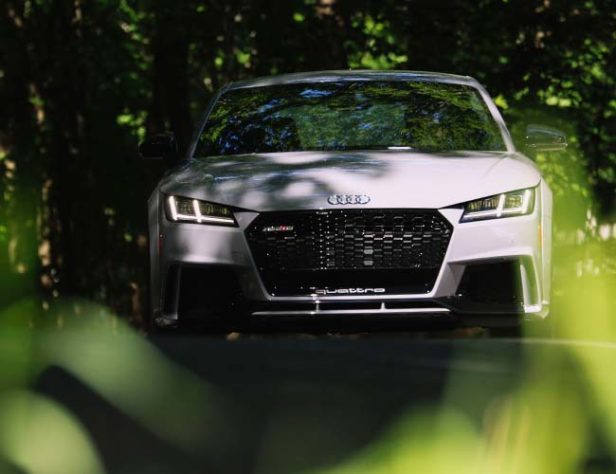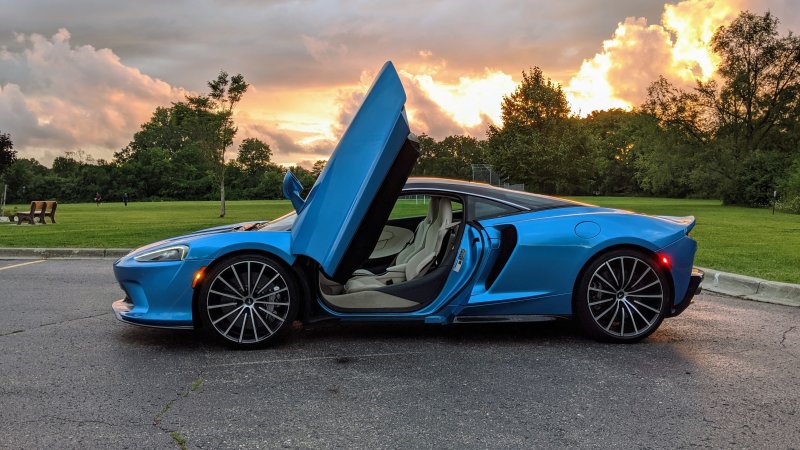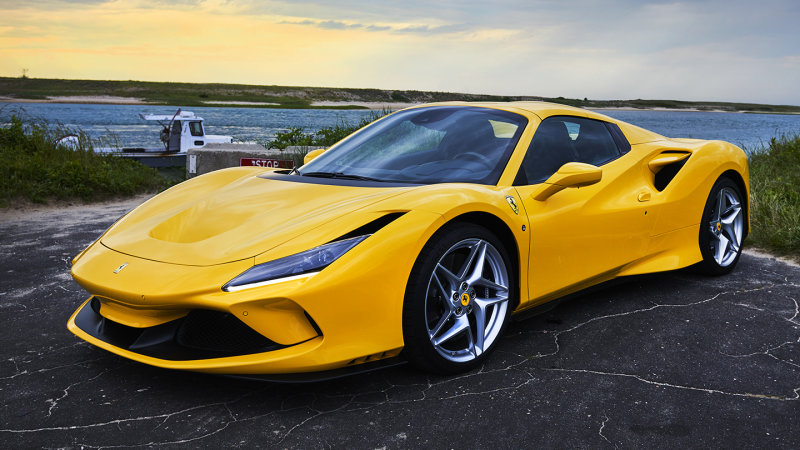The Porsche Cayman GTS ($79,800 MSRP) sits at the highest end of the company’s “entry-level” model as a mid-engine, pared-down sports car coupe. Introduced in 2005 as a fraternal twin to the convertible Boxster range, both the Cayman and Boxster are now in their fourth generation, designated 718. Their evolution has seen consistent gains in performance, luxury, technology and cost. This model, the GTS, like the slightly more expensive Boxster GTS ($81,900) features standard aesthetic and engineering details that further increase power and torque compared to lower-versions. It comes standard with a six-speed manual and is offered with a seven-speed dual clutch automatic (called PDK, for “Porsche Doppelkupplung“). It is very fast, sounds wonderful and feels like a surface-to-air go-kart that, if you’re slightly bold, could do duty as a daily driver.
The Good: More power, more torque and better performance. Standard. Clever changes in the way air is supplied to the engine and turbocharger bump power 15 horsepower and torque up to 35 lb-ft over Cayman S models. While the engine is only a 2.5-liter four-cylinder, it develops 365 horsepower and up to 317 lb-ft of torque with the PDK (309 lb-ft for manual-transmission cars). That’s a lot of oomph and twist from a very tiny package, and it feels strong as hell. The car charges ahead and always supplied me with instant thrust, whether from a standstill (0-60 in 3.9 seconds, by the way) or on the open road (180 mph top speed).
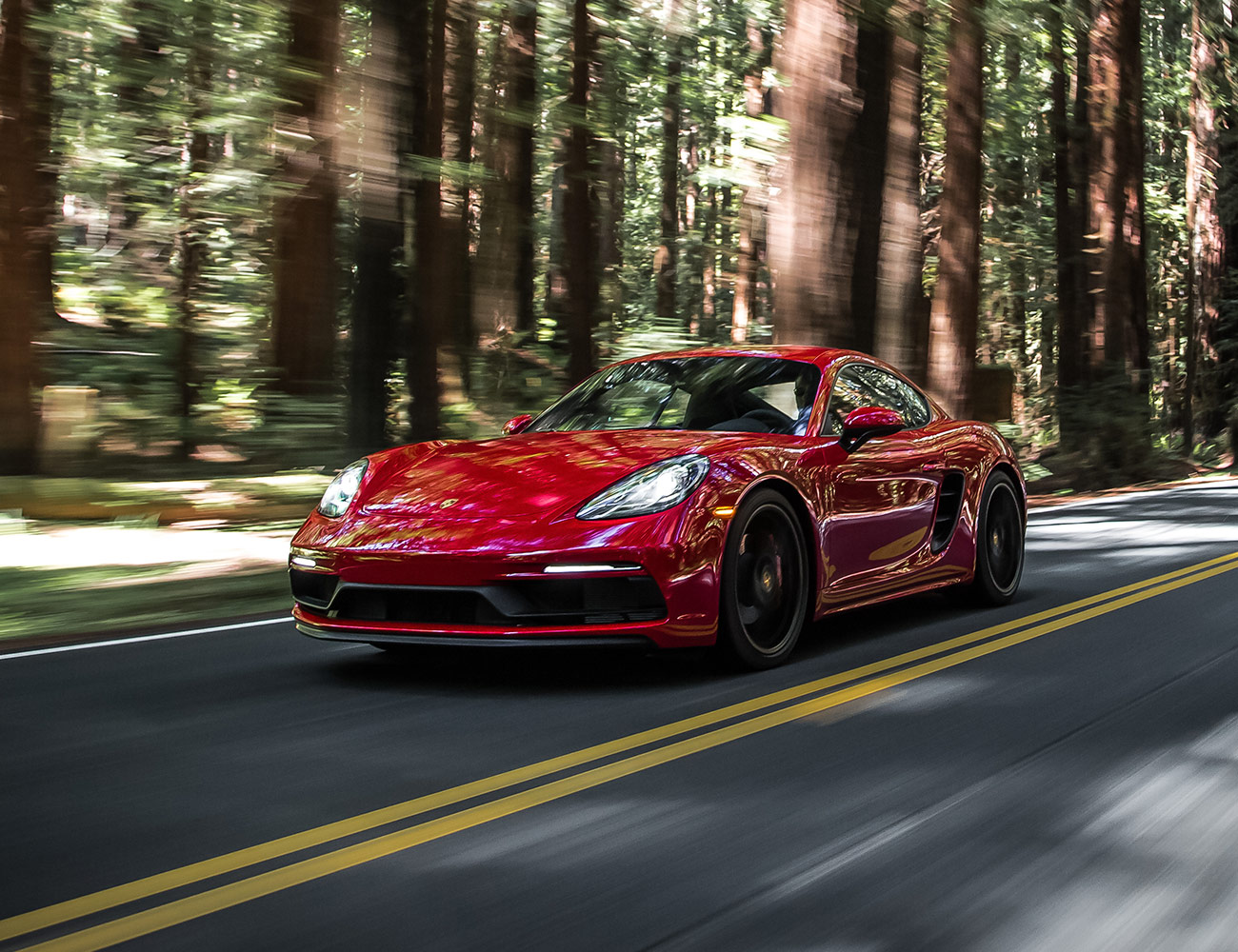
Tha Cayman GTS also handles like a champ, thanks to a system called PASM (Porsche Active Suspension Management), which squats the car 0.39 inches lower than other Cayman models. A mechanical rear differential lock and Porsche Torque Vectoring (more engineering magic) provide extra grip and surefootedness. Tinted lights, blacked-out fascias and exhaust tips complement available black wheels; inside are deep, enveloping sport seats and Alcantara-covered everything.
Who It’s For: A driving enthusiast who’s serious about his toys. The Cayman GTS is small and austere for an $80,000 car, and it rides stiffly, like a tensed animal on high alert. Which is precisely the way it should be. It’s a relatively tiny sports car for someone who can afford to have a tiny sports car but also doesn’t want to compromise on fun and performance. If you want a Very Fast Porsche but don’t want to spend 911 money, this is your ride. Of course, if you want a convertible, the Boxster GTS is available for slightly more money and will be specced similarly.
Watch Out For: It’s small and low. Again, this isn’t a 911, which leans more ‘grand tourer’ on the size and shape end of the car spectrum. The Cayman GTS, especially with its standard “Sports Seats Plus” chairs, does not want your body to go anywhere — especially while you’re, you know, driving the car (this is good). But the seats also keep you very firmly planted when you need to exit the car, almost like they have a gravitational pull. Again, if you’re buying the Cayman GTS, this is what you want, but be sure you’re aware of what you’re getting into (and possibly not easily out of).
As mentioned above, the Cayman GTS is also quite spartan — though it’s well appointed and most of the materials are excellent, this is a car meant to be driven hard, and not to float down the road like a cloud. Some (very few, but prominent) touchpoint plastics inside feel cheap. À la carte options, as is Porsche tradition, are very pricey. Turbo noise is certainly audible, which will turn off purists (but they’ll have to get used to our Porsches-now-use-turbos reality, sorry).
Alternatives: The obvious choice here is to stay within the German sports car clique; start there, and you really have two options in this general price range and performance band: Mercedes-AMG and Audi. The Mercedes-AMG C63 S coupe ($75,500) strikes physics just about as hard as its looks strike your fancy. It’s powered by a 503-horsepower twin-turbo V8, however, so its power delivery and dynamics are quite different from the Cayman GTS. Still, 0-60 in 3.8 seconds is excellent for a car verging on two tons. (The Cayman GTS is just over 1.5 tons.) Another option is the Audi TT RS ($64,900). In our review, we called it “a supercar at a sports car price point.” The TT RS is motivated by a 2.5-liter turbocharged five-cylinder and does 0-60 in 3.6 seconds. You could also go completely off the Reservierung and pick up a Corvette Grand Sport ($65,495), which I reviewed last year and called “stupid fun” but whose sporting experience I found lacking.
Review: I was riding shotgun just after breakfast, coffee-drunk and as rested as jet lag would allow. After climbing down into the deep sueded bucket, I clicked my seatbelt and hit… the button. The button is simultaneously one of the greatest and funniest things about a modern Porsche. It sits on the right side of the center console, just south of the shift mechanism. Its red LED light comes on automatically once the driver dials in Sport or Sport Plus modes with the steering wheel control knob, but in Normal mode, you have to toggle it manually. There is no lettering, no ceremony, just a line drawing of twin tailpipes. Sport exhaust, Ich liebe dich. Press it, and the sensory world shimmies as baffles in the exhaust open and in the Cayman GTS let the turbo-flat-four boxer engine behind your ears really hum.
Now, I like wine but don’t love wine and wine definitely doesn’t love me. That’s why my day began in the passenger seat, a two-glass-tannin-overloaded lightweight with a rollicking headache and queasy everything else. Wine is one thing Napa, California, our review locale, is good for; another is fantastic, winding, undulating roads with clear straights and beautiful sights. My driving partner took advantage of every twist. Despite my subpar condition, I enjoyed every acceleration (brutal, with shotgun upshifts), fiddled with the new infotainment/navigation system and marveled at the interior: “this Cayman GTS is businesslike,” I muttered to myself. Then, as we lolled tautly and crisply through some grape-infested scribbles of California pavement, I fell asleep. Dead asleep, even as the Cayman GTS attacked a road course seemingly designed by racing angels.
I’m not suggesting the driver skills were so refined and smooth that he purposefully left me undisturbed, like a delicate vase in a windstorm (he’s quite good, actually). But I’m absolutely saying the car is that refined and smooth. The Cayman GTS, with all its steroidal sportiness and aggressive damping/tuning/shifting/steering, is also fully capable of shorter-term grand touring. The front trunk carries more than you’d expect, but not much; the sport buckets aren’t perfect for long hauls, but are almost as comfortable on the ass as they are capable of mitigating lateral grip. Overall, the car is supple and athletic as hell — at least on smooth roads.
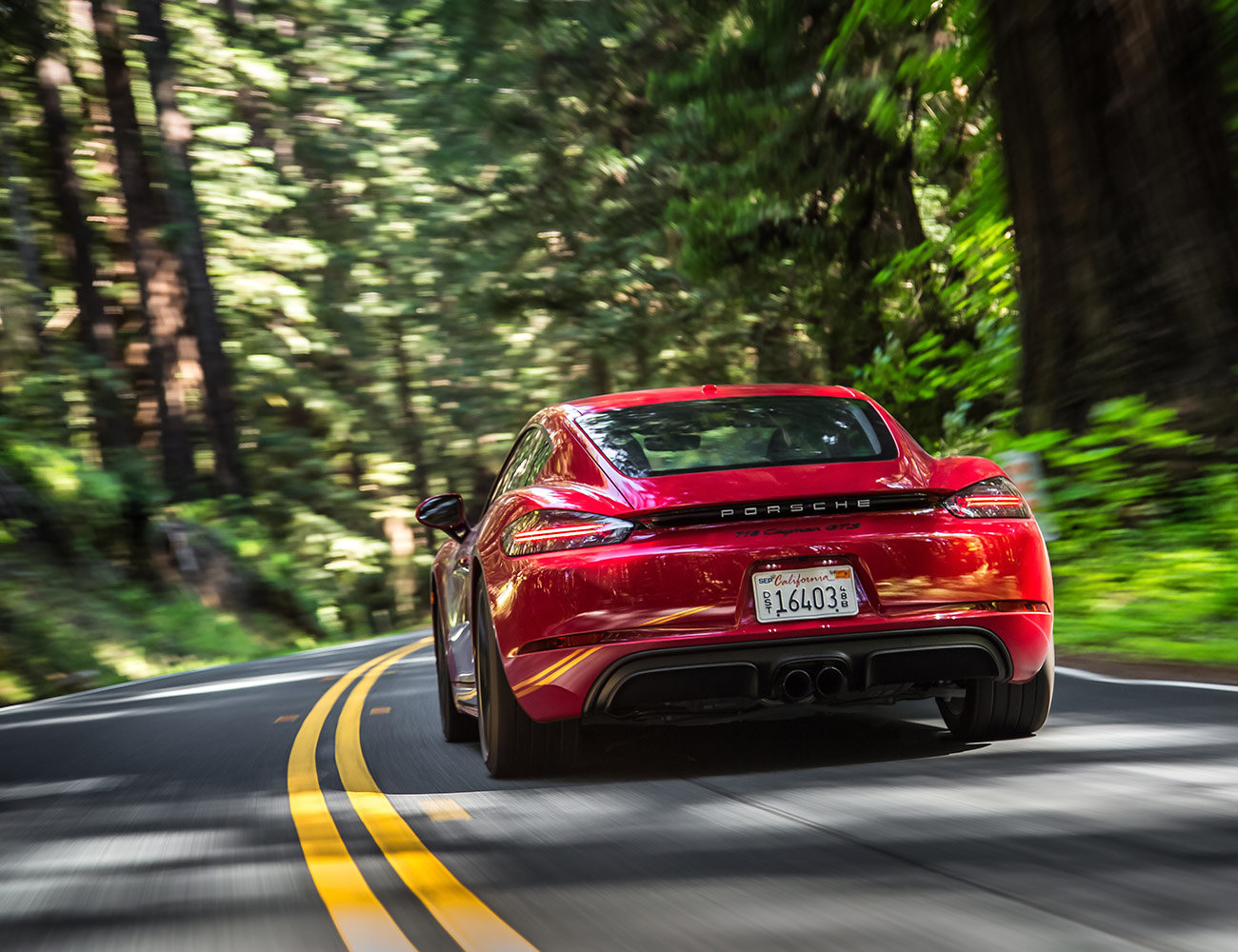
The power nap having revived my sporting nature, I spent the next couple hours before lunch behind the wheel, bombing down dark, flat, twisting roads wound between stoic, mossy Redwood giants. After that, I turned around and did it again. And again. In searching for a perfect photo opp, we pulled off on an empty offshoot and tried our luck, but were rewarded with no photos opps — and the harshest pavement I could have imagined. Insisting on keeping the car in Sport Plus, I bucked and bounded us forward and discovered the duality of Porsche’s clever suspension setup. This Cayman GTS is the sportiest version of the entry-level sports car, and it is capable on any road. I can sleep in the passenger seat after breakfast and slaughter the tires in the driver’s seat before lunch. But it can’t be all things, and though it has daily-driver potential, it is by and large a fun sports car only.
Its turbo-four is strong, strong, strong through almost the entire rev range, as torque hits a plateau at just 1,900 RPM. It pulls down the straights, it’s flat as glass through corners and it sounds brutal — with enough turbo whistle to remind you that this is a modern Porsche. The Cayman GTS is the car to drive if you’re an enthusiast who wants the upper echelon of small sports cars without buying more than you need to. Just don’t plan to travel the world in it. And make sure you’ve got a trusty copilot if you want to catch a few winks.
What Others Are Saying:
• “The flat-four’s aural quality is a huge point of contention within Porsche circles, even though the new engine is both more powerful and more efficient than the flat-six it replaces. Honestly, I rather like the hearty, robust growl from out back, especially accompanied by the snaps and pops of the GTS’ standard sport exhaust.” — Steven Ewing, CNET
• “Such a fanatically honed chassis begs for an engine that’s not just powerful, but also responsive. That’s a tall order for a heavily boosted four-cylinder, but this one delivers. There’s not a whiff of turbo lag, and the throttle is easy to modulate. The GTS employs the same anti-lag measures as the 718 S, including variable-geometry turbines, a technology shared with the 911 Turbo.” — Matthew de Paula, Road and Track
• “I hammered the Boxster like a bad nail. It dove into the tight corners and held on smoothly through the sweepers like the sports car it always has been, only a little better. Balance felt perfect.” — Mark Vaughn, Autoweek
2018 Porsche Cayman and Boxster GTS
Engine: 2.5-liter turbocharged opposed four-cylinder
Transmission: six speed manual; seven-speed dual-clutch automatic (PDK); rear-wheel drive
Horsepower: 365
Torque: 309 lb-ft (manual); 317 lb-ft (PDK)
0-60: 3.9 seconds
Top Speed: 180 mph
MSRP (base): $79,800 (Cayman); $81,900 (Boxster)
We spent the day at Lime Rock Raceway in Connecticut to experience the 2018 TT RS on road and on the track. Read the Story


